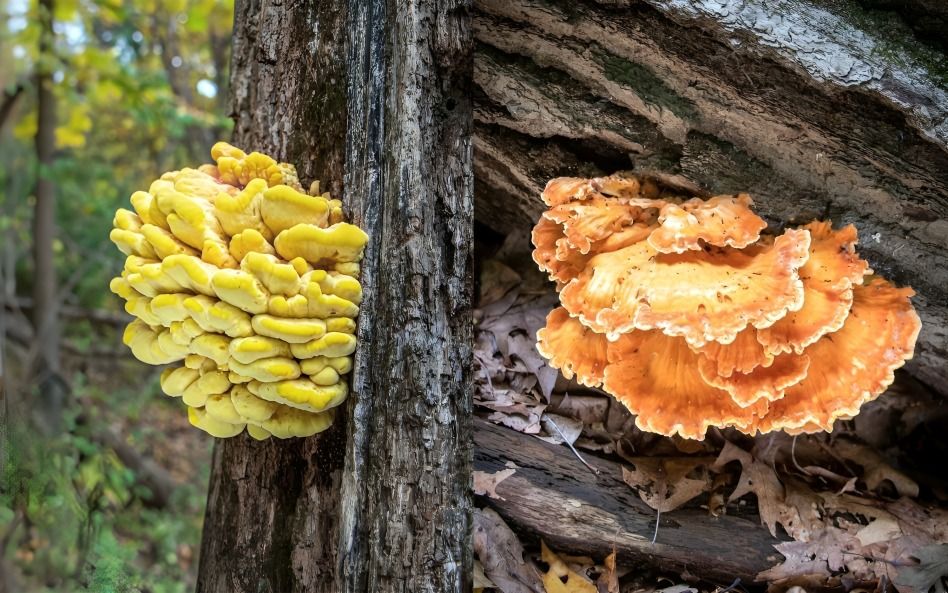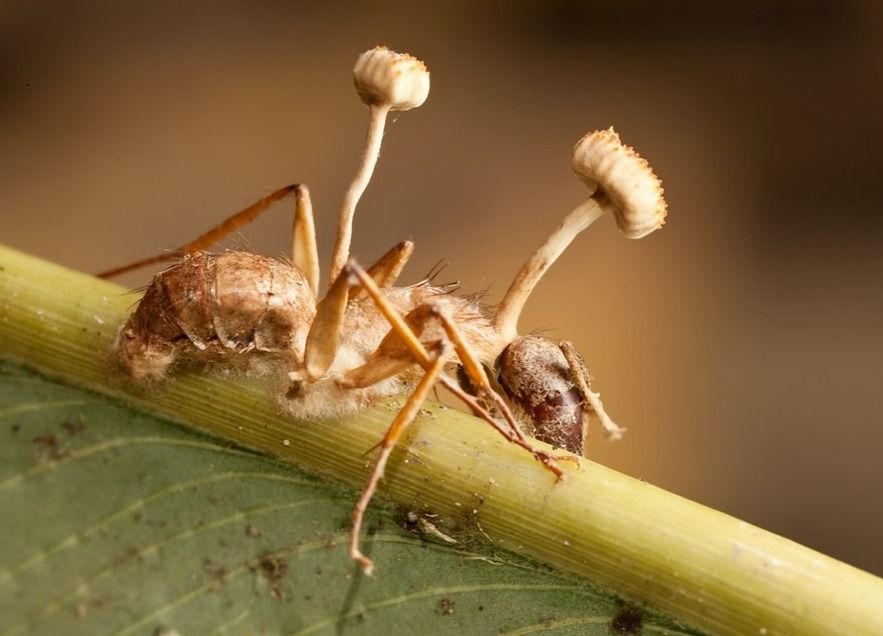
“
Fungi are some of Earth's most diverse and fascinating organisms, playing crucial roles in ecosystems and human life. Fungi are remarkable in their unique reproductive methods and incredible ability to decompose organic matter. In exploring 20 amazing facts about fungi, we'll uncover the secrets behind their complex behaviors, diverse forms, and significant contributions to the environment and medicine. Prepare to be amazed by the world of fungi and their surprising capabilities.1
1
1
”
In 1998, a species of honey fungus (Armillaria ostoyae) was discovered in Oregon Forest, covering approximately 2,384 acres. This colossal fungus has persisted for over 2,400 years, thriving on living and dead wood. 1
Without saprotrophic fungi, dead leaves and logs would pile up as they break down organic matter. These fungi produce enzymes to decompose tough plant compounds like cellulose, hemicellulose, and pectin. Some can even break down lignin in wood.2

The heaviest edible fungi, a Laetiporus sulphureus or 'chicken of the woods' mushroom, weighed 45.35 kg (100 lb). It was discovered by Giovanni Paba in the New Forest, Hampshire, UK, on October 15, 1990.
Globally, there are about 200,000 known species of fungi, with roughly 15,000 in the UK. Scientists estimate there may be up to 2 million undiscovered fungal species. Fungi play a crucial role in ecosystems, breaking down organic matter and recycling nutrients. 3
Birch polypore (Fomitopsis betulina) was found in the pocket of Ötzi the Iceman, who lived around 5,200 years ago. This ancient fungus, discovered in the Alps, was used by Ötzi for its medicinal and practical properties. 4
Over 110 fungal species can glow in the dark, with either the mycelium or mushrooms emitting light. In the UK, UV light reveals the glow of sulfur tuft mushrooms. It’s believed that this bioluminescence helps attract insects to spread their spores.5
The largest edible fungus, a giant puffball (Calvatia gigantea), measured 2.64 meters (8 feet 8 inches) in circumference and weighed 22 kg (48 lb 8 oz). It was discovered by Jean-Guy Richard in Montreal, Quebec, Canada, in 1987. 6
In the future, bioluminescence could revolutionize urban lighting by enabling the genetic engineering of luminescent trees. This innovation would offer a sustainable, eco-friendly alternative to traditional streetlights. 7
The most poisonous fungus is the death cap (Amanita phalloides), found globally, including in North America and the UK. It is responsible for 90% of fatal fungal poisonings. 8

Certain fungi, like Ophiocordyceps unilateralis, turn ants into "zombies." This parasite infects carpenter ants, controls their brains, and directs them to climb plants ideal for fungal growth.
Even with meticulous hygiene, your feet host nearly 200 types of fungi. They thrive especially on the heel, between the toes, and under the toenails. While most fungi are harmless, an overgrowth can lead to infections like Athlete's foot. 9
Fungi didn't invent the internet, but they created something similar: the 'Wood Wide Web.' This ancient network of Mycorrhizal fungi connects trees and plants, enabling nutrient exchange and underground communication. 10
The longest fungal mycelium boat, measuring 2.30 meters (7 feet 6 inches), was created by Katy Ayers and Ashley Gordon in Grand Island, Nebraska, on September 6, 2019. Named 'Myconoe,' the canoe grows new mushrooms each time it's used. 11
In rainforests, mushrooms play a key role in rainfall. They release spores into the air that attract moisture, serving as nuclei for raindrop formation in clouds. This process helps generate the rain characteristic of these warm, humid environments.12
Edible porcini mushrooms (Boletus edulis) are found throughout the Northern Hemisphere. They form symbiotic relationships with various tree species, enhancing nutrient exchange. 13
Fungi are used to create sustainable materials such as packaging, insulation, and even furniture. Mycelium, the root-like structure of fungi, is biodegradable and can be molded into various shapes. 14
Some fungi produce mycotoxins that are harmful when ingested or inhaled by animals, such as the death cap mushroom (Amanita phalloides), which can be fatal if consumed. In contrast, many fungi are also beneficial and contribute to medicine.15
Wheat infected by ergot (Claviceps purpurea) produces lysergic acid, the active component of LSD. Ergotism, caused by consuming ergot-contaminated grains, has historically led to severe outbreaks of poisoning, known as "St. Anthony's Fire." 16
The largest fungus, Armillaria ostoyae, or "Humongous Fungus," was found in Oregon's Malheur National Forest. It weighs between 7,500 and 35,000 US tons and covers 965 hectares (2,385 acres), equivalent to 1,350 soccer fields. 17
Fungi can cause diseases in animals. For instance, Batrachochytrium dendrobatidis infects amphibians, leading to declines in frog populations, and Candida species can cause infections in mammals.18


